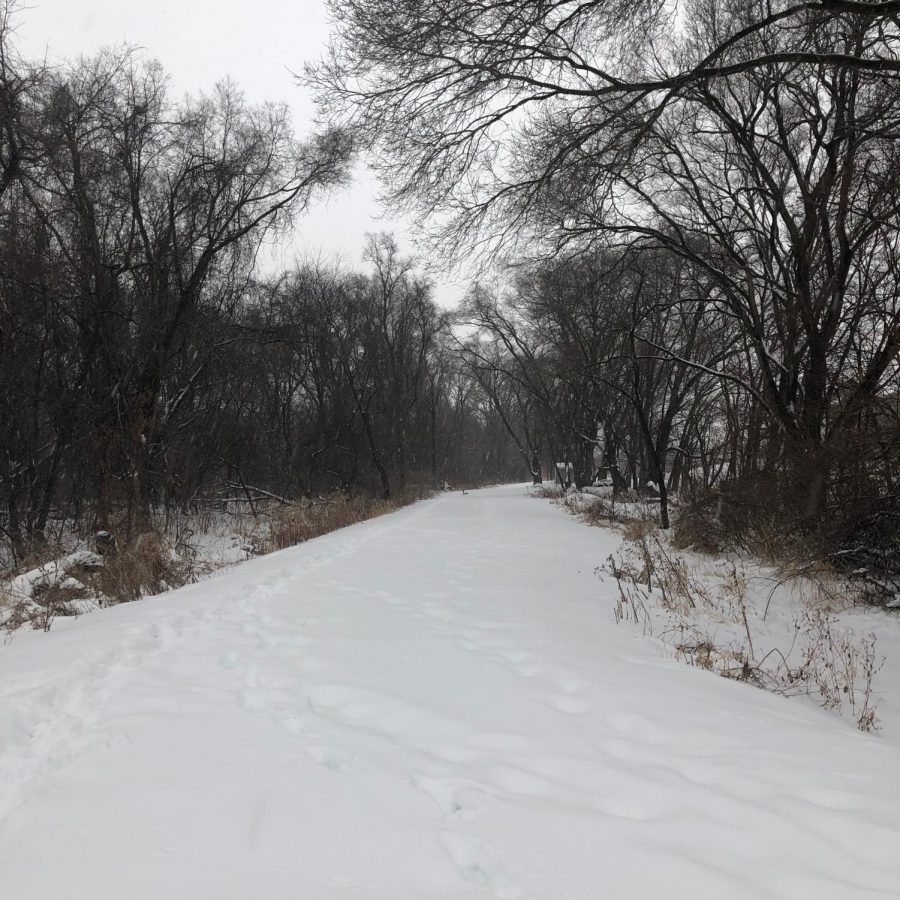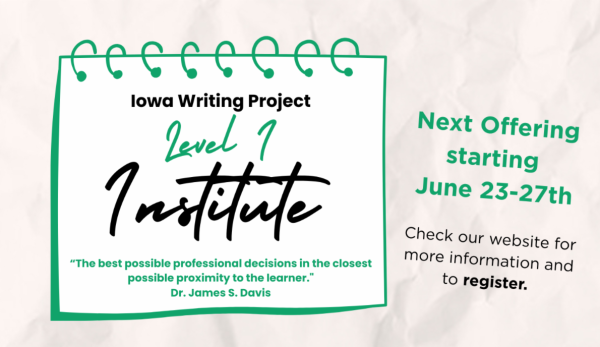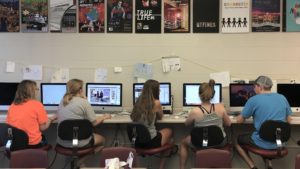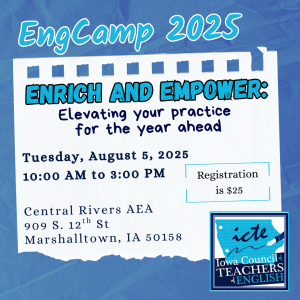Teaching in 2020-2021; Driving in a Snow Storm
Pretending We Don’t See the Snow
February 4, 2021
Waves of white cover the yellow lines. Where is the left-turn lane? How close can I get to that other car? Why is that car going so fast? And why are their headlights not on? Will I be able to stop if this streetlight turns yellow? What do I do if my tires spin through the intersection. What if I get stuck? What can I do?
I am not sure about others, but I know that when I am brushing off my car, snowflakes still pouring from the sky, and getting ready to drive home during a snowstorm, there is always a sense of dread in me. I have heard that there are people who enjoy driving in the snow; sliding down icy roads or making donut turns in parking lots. That isn’t me. I would prefer to drive on solid ground without the treacherous crystals that seem to cause so many problems in our Midwestern winters.
And yet, the stop lights keep going from red, to yellow, to green. People continue to try and find turn lanes buried beneath the white flakes. Cars attempt to move at the speed limit. People try to go to and from work as if nothing has changed — as if there isn’t a barrage of snow falling on us from above. People continue on as usual. Or, at least try to do so.
This situation is not normal. This situation is dangerous. We should not be driving down the road as if nothing has changed. We should not be driving around as if everything is fine. There should be different traffic laws. More help. We should slow down and make sure that everyone is safe. No one should be risking their life trying to get from Point A to Point B unless absolutely necessary. We should be making better decisions.
But what have we done with teaching this year? For many of us, we have been forced to go back into the schools and perform and teach as if nothing has changed. We are surrounded by a highly-contagious virus. We are teaching in a pandemic — the likes of which hasn’t been seen for almost a hundred years. We are asked to teach in a hybrid model. We are asked to teach online students and in-person students at the same time, all while wearing a mask and cleaning desks between periods. We are asked to cover the classes of colleagues, to supervise lunch and recess, and to be “flexible.” We are required to meet the needs of all of these learners no matter the time restraints. All of this while trying to remain safe and healthy for ourselves and our own families.
My first year of teaching, I was living in Ames, Iowa, but commuting to West Des Moines — normally about a 45-minute drive to school. Being young and naive, I underestimated the power of an Iowa winter during a commute. I will always remember January 14th. An enormous weather system dropped almost a foot of snow on Iowa during the after-school commute. Being young (and stupid), I decided to brave the trek home in a blizzard in my tiny Ford Fiesta.
I quickly found myself in a lose-lose situation on Interstate-80. The wind threatened to slide my wheels across the lanes of traffic while snow pelted my windshield. With my vision restricted to only a few feet in front of me, large 18-wheelers zoomed by. If I drove slowly, I feared being rear-ended by careless drivers behind me. Too fast and I feared losing control and flying into a ditch.
Driving in a blizzard: there was no way to win.
Teaching in 2020: there is no way to win.
Give too little and the students suffer. Give too much and I suffer. No lesson I create can be good enough to meet the diverse needs of my in-person and virtual learners, I am driving with no vision. I am teaching with my hands tied behind my back.
When driving the car down that icy road, I push on the brake and my tires skid across the surface. When teaching in 2020, I reach for that tried-and-true instructional method and it won’t work. The group work, discussions, Socratic Seminars, performances, partner-reading — none of it quite works the way it used to. I can’t work the way I used to.
The rules are constantly changing. The lines are constantly blurring. How do we adapt to a situation in the moment? How do we steer our way through these challenges? How do we invent a new style of teaching while adapting to life in a pandemic?
The first-year teacher version of myself was all alone on that treacherous car ride home. I didn’t know if or when I would get home safely. At times, I didn’t see an end in sight.
Unlike “first-year teacher” me, I am not alone this year. I have friends and colleagues to help me. I have people to lean on in the hard times. I have experts in the field who can share their great ideas. When the road is unclear, I have fellow-teachers who can take that wheel and lead me on my way.
We need to acknowledge that this year is not normal. No lesson plan or project is the same. The smallest issues are exasperated. The days are long and the week are eternities. Nothing is ever “good enough.” This is not okay. We are not okay. Why are we being asked to teach as if nothing has changed?
Why are we being asked to drive and pretend we don’t see the snow?













Kim Van Es • Feb 4, 2021 at 9:10 am
Thank you, Karl, for using such an apt metaphor to describe teaching this year. May you find a good balance of taking care of both your students and yourself. And may you arrive safely after journeying through the blizzard!